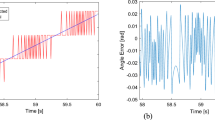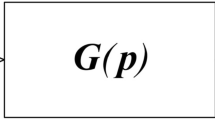Abstract
The majority of the vibration-based structural health monitoring techniques require modal parameter estimation. Recently, modal identification using indirect measurements is being developed and investigated as it avoids elaborate and laborious tasks associated with placing sensors on the structure and data acquisition systems and thereby reducing initial as well as recurring costs. Apart from this, multiple bridges can be scanned using the instrumented vehicle in a shorter time, saving considerable time in the modal parameter estimation of bridges. However, it is extremely challenging to estimate the modal parameters using the vibration responses from the vehicle moving over the bridge. The measured dynamic responses from the instrumented vehicle include components associated with the bridge, vehicle as well as driving frequencies apart from the disturbances associated with the bridge surface roughness. Therefore, isolating the bridge frequencies from the mix of all these frequency components is rather difficult. In this paper, efforts are made to devise a new modal parameter estimation technique using the combination of variational mode decomposition with the Teager–Kaiser energy operator. The vehicle-bridge interaction system employed in the present investigations idealizes the vehicle as a quarter car and the bridge as a beam. Parametric studies have been carried out to test the sensitivity of the proposed algorithm to the measurement noise, vehicle speed, and road surface roughness during signal decomposition as well as modal identification. The studies presented in this paper confirm that the proposed method can identify bridge mode shapes and frequencies with good accuracy by extracting bridge-related components from the instrumented vehicle body responses.












Similar content being viewed by others
Data Availability
Data Available.
Code Availability
Custom Code Available.
References
E.P. Carden, P. Fanning, Vibration based condition monitoring: a review. Struct. Health Monit. 3(4), 355–377 (2004). https://doi.org/10.1177/1475921704047500
Y.B. Yang, C.W. Lin, J.D. Yau, Extracting bridge frequencies from the dynamic response of a passing vehicle. J. Sound Vib. 272(3–5), 471–493 (2004). https://doi.org/10.1016/S0022-460X(03)00378-X
L. Deng, C.S. Cai, Identification of parameters of vehicles moving on bridges. Eng. Struct. 31(10), 2474–2485 (2009). https://doi.org/10.1016/j.engstruct.2009.06.005
E.J. O’Brien, P. McGetrick, A. González, A drive-by inspection system via vehicle moving force identification. Smart Struct. Syst. 13(5), 821–848 (2014). https://doi.org/10.12989/sss.2014.13.5.797
Y. Zhang, L. Wang, Z. **ang, Damage detection by mode shape squares extracted from a passing vehicle. J. Sound Vib. 331(2), 291–307 (2012). https://doi.org/10.1016/j.jsv.2011.09.004
Y. Oshima, K. Yamamoto, K. Sugiura, Damage assessment of a bridge based on mode shapes estimated by responses of passing vehicles. Smart Struct. Syst. 13(5), 731–753 (2014). https://doi.org/10.12989/sss.2014.13.5.731
W.M. Li, Z.H. Jiang, T.L. Wang, H.P. Zhu, Optimization method based on generalized pattern search algorithm to identify bridge parameters indirectly by a passing vehicle. J. Sound Vib. 333(2), 364–380 (2014). https://doi.org/10.1016/j.jsv.2013.08.021
Y.B. Yang, W.F. Chen, Extraction of bridge frequencies from a moving test vehicle by stochastic subspace identification. J. Bridge Eng. 21(3), 04015053 (2016). https://doi.org/10.1061/(ASCE)BE.1943-5592.0000792
X.U.A.N. Kong, C.S. Cai, B. Kong, Numerically extracting bridge modal properties from dynamic responses of moving vehicles. J. Eng. Mech. 142(6), 04016025 (2016). https://doi.org/10.1061/(ASCE)EM.1943-7889.0001033
X. Kong, C.S. Cai, L. Deng, W. Zhang, Using dynamic responses of moving vehicles to extract bridge modal properties of a field bridge. J. Bridge Eng. 22(6), 04017018 (2017). https://doi.org/10.1061/(ASCE)BE.1943-5592.0001038
A. Malekjafarian, E.J. OBrien, Identification of bridge mode shapes using short time-frequency domain decomposition of the responses measured in a passing vehicle. Eng. Struct. 81, 386–397 (2014). https://doi.org/10.1016/j.engstruct.2014.10.007
A. Malekjafarian, E.J. OBrien, On the use of a passing vehicle for the estimation of bridge mode shapes. J. Sound Vib. 397, 77–91 (2017). https://doi.org/10.1016/j.jsv.2017.02.051
C. Tan, N. Uddin, E.J. OBrien, P.J. McGetrick, C.W. Kim, Extraction of bridge modal parameters using passing vehicle response. J. Bridge Eng. 24(9), 04019087 (2019). https://doi.org/10.1061/(ASCE)BE.1943-5592.0001477
Y.B. Yang, J.P. Yang, State-of-the-art review on modal identification and damage detection of bridges by moving test vehicles. Int. J. Struct. Stab. Dyn. 18(02), 1850025 (2018). https://doi.org/10.1142/S0219455418500256
A. Malekjafarian, P.J. McGetrick, E.J. OBrien, A review of indirect bridge monitoring using passing vehicles. Shock. Vib. (2015). https://doi.org/10.1155/2015/286139
X.Q. Zhu, S.S. Law, Structural health monitoring based on vehicle-bridge interaction: accomplishments and challenges. Adv. Struct. Eng. 18(12), 1999–2015 (2015). https://doi.org/10.1260/1369-4332.18.12.1999
S. Chen, F. Cerda, P. Rizzo, J. Bielak, J.H. Garrett, J. Kovačević, Semi-supervised multiresolution classification using adaptive graph filtering with application to indirect bridge structural health monitoring. IEEE Trans. Signal Process. 62(11), 2879–2893 (2014). https://doi.org/10.1109/TSP.2014.2313528
J. Li, X. Zhu, S.S. Law, B. Samali, Drive-by blind modal identification with singular spectrum analysis. J. Aerosp. Eng. 32(4), 04019050 (2019). https://doi.org/10.1061/(ASCE)AS.1943-5525.0001030
J.D. Sitton, D. Rajan, B.A. Story, Bridge frequency estimation strategies using smartphones. J Civ Struct Health Monit. 10(3), 513–526 (2020). https://doi.org/10.1007/s13349-020-00399-z
S.S. Eshkevari, T.J. Matarazzo, S.N. Pakzad, Bridge modal identification using acceleration measurements within moving vehicles. Mech. Syst. Sig. Process. 141, 106733 (2020). https://doi.org/10.1016/j.ymssp.2020.106733
Q. Mei, N. Shirzad-Ghaleroudkhani, M. Gül, S.F. Ghahari, E. Taciroglu, Bridge mode shape identification using moving vehicles at traffic speeds through non-parametric sparse matrix completion. Struct. Control. Health Monit. 28(7), e2747 (2021). https://doi.org/10.1002/stc.2747
N. **, Y.B. Yang, E.G. Dimitrakopoulos, T.S. Paraskeva, L.S. Katafygiotis, Application of short-time stochastic subspace identification to estimate bridge frequencies from a traversing vehicle. Eng. Struct. 230, 111688 (2021). https://doi.org/10.1016/j.engstruct.2020.111688
J. Li, X. Zhu, J. Guo, Enhanced drive-by bridge modal identification via dual Kalman filter and singular spectrum analysis. Struct. Control. Health Monit. 29(5), e2927 (2022). https://doi.org/10.1002/stc.2927
P. Singh, A. Sadhu, A hybrid time-frequency method for robust drive-by modal identification of bridges. Eng. Struct. 266, 114624 (2022). https://doi.org/10.1016/j.engstruct.2022.114624
D.S. Yang, C.M. Wang, Modal properties identification of damped bridge using improved vehicle scanning method. Eng. Struct. 256, 114060 (2022). https://doi.org/10.1016/j.engstruct.2022.114060
Z. Peng, J. Li, H. Hao, N. Yang, Mobile crowdsensing framework for drive-by-based dense spatial-resolution bridge mode shape identification. Eng. Struct. 292, 116515 (2023). https://doi.org/10.1016/j.engstruct.2023.116515
K. Demirlioglu, S. Gonen, E. Erduran, Efficacy of vehicle scanning methods in estimating the mode shapes of bridges seated on elastic supports. Sensors 23(14), 6335 (2023). https://doi.org/10.3390/s23146335
Y. He, J.P. Yang, Z. Yan, Enhanced identification of bridge modal parameters using contact residuals from three-connected vehicles: theoretical study. Structures 54, 1320–1335 (2023). https://doi.org/10.1016/j.istruc.2023.05.112
Y.B. Yang, Z. Li, Z.L. Wang, Z. Liu, X.Q. Mo, F.Q. Qiu, Closely spaced modes of bridges estimated by a hybrid time-frequency method using a multi-sensor scanning vehicle: theory and practice. Mech. Syst. Signal Process. 192, 110236 (2023). https://doi.org/10.1016/j.ymssp.2023.110236
Z.L. Wang, J.P. Yang, K. Shi, H. Xu, F.Q. Qiu, Y.B. Yang, Recent Advances in Research on Vehicle Scanning Method for Bridges. Int. J. Struct. Stab. Dyn. 22(15), 2230005 (2022). https://doi.org/10.1142/S0219455422300051
P. Singh, S. Mittal, A. Sadhu, Recent Advancements and Future Trends in Indirect Bridge Health Monitoring. Pract. Period. Struct. Des. Constr. 28(1), 03122008 (2023). https://doi.org/10.1061/PPSCFX.SCENG-1259
G. Loprencipe, P. Zoccali, Use of generated artificial road profiles in road roughness evaluation. J. Mod. Transp. 25, 24–33 (2017). https://doi.org/10.1007/s40534-017-0122-1
Y.B. Yang, B. Zhang, Y. Qian, Y. Wu, Contact-point response for modal identification of bridges by a moving test vehicle. Int. J. Struct. Stab. Dyn. 18(05), 1850073 (2018). https://doi.org/10.1142/S0219455418500736
K. Dragomiretskiy, D. Zosso, Variational mode decomposition. IEEE Trans. Signal Process. 62(3), 531–544 (2013). https://doi.org/10.1109/TSP.2013.2288675
W. Yang, Z. Peng, K. Wei, P. Shi, W. Tian, Superiorities of variational mode decomposition over empirical mode decomposition particularly in time-frequency feature extraction and wind turbine condition monitoring. IET Renew. Power Gener. 11(4), 443–452 (2017). https://doi.org/10.1049/iet-rpg.2016.0088
H.M. Teager, S.M. Teager, Evidence for nonlinear sound production mechanisms in the vocal tract. Speech production and speech modelling 55, 241–261 (1990). https://doi.org/10.1007/978-94-009-2037-8_10
H. Teager, Some observations on oral airflow during phonation. IEEE Trans. Signal Process. 28(5), 599–601 (1980). https://doi.org/10.1109/TASSP.1980.1163453
J.F. Kaiser, On Teager’s energy algorithm and its generalization to continuous signals. in Proceeding. 4th IEEE digital signal processing workshop. (Mohonk, 1990)
J.F. Kaiser, On a simple algorithm to calculate the ‘energy’ of a signal. in Proceeding IEEE International Conference on Acoustics Speech Signal Processing (IEEE, 1990). pp. 381–384. https://doi.org/10.1109/ICASSP.1990.115702
P. Maragos, J.F. Kaiser, T.F. Quatieri, Energy separation in signal modulations with application to speech analysis. IEEE Trans. Signal Process. 41(10), 3024–3051 (1993). https://doi.org/10.1109/78.277799
X. Diao, J. Jiang, G. Shen, Z. Chi, Z. Wang, L. Ni, Y. Hao, An improved variational mode decomposition method based on particle swarm optimization for leak detection of liquid pipelines. Mech. Syst. Signal Process 143, 106787 (2020). https://doi.org/10.1016/j.ymssp.2020.106787
X. Yan, Y. Liu, W. Zhang, M. Jia, X. Wang, Research on a novel improved adaptive variational mode decomposition method in rotor fault diagnosis. Appl. Sci. 10(5), 1696 (2020). https://doi.org/10.3390/app10051696
S.E. Fang, R. Perera, Power mode shapes for early damage detection in linear structures. J. Sound Vib. 324(1–2), 40–56 (2009). https://doi.org/10.1016/j.jsv.2009.02.002
Acknowledgements
The authors acknowledge the support of the Department of Science and Technology, SERB, Government of India, through POWER research grant SERB/F/130/2021-2022 for carrying out this part of the research. The paper is being published with the permission of the Director, CSIR-SERC, Chennai.
Funding
The authors acknowledge the support of the Department of Science and Technology, SERB, Government of India, through POWER research grant SERB/F/130/2021–2022 for carrying out this part of the research.
Author information
Authors and Affiliations
Corresponding author
Ethics declarations
Conflict of interest
No conflicts of interest.
Additional information
Publisher's Note
Springer Nature remains neutral with regard to jurisdictional claims in published maps and institutional affiliations.
Rights and permissions
Springer Nature or its licensor (e.g. a society or other partner) holds exclusive rights to this article under a publishing agreement with the author(s) or other rightsholder(s); author self-archiving of the accepted manuscript version of this article is solely governed by the terms of such publishing agreement and applicable law.
About this article
Cite this article
Srinivas, A., Lakshmi, K. Modal Identification of a Bridge Using the Vibration Response of a Passing Vehicle Combining VMD and TKEO. J. Inst. Eng. India Ser. A (2024). https://doi.org/10.1007/s40030-024-00818-0
Received:
Accepted:
Published:
DOI: https://doi.org/10.1007/s40030-024-00818-0




